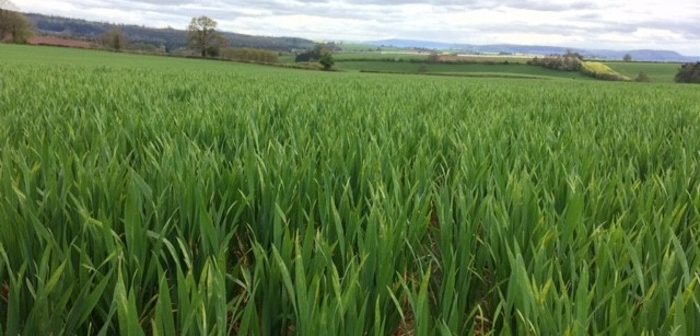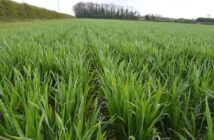With April and May being the high-risk months for Septoria and rust development, vigilance now will be vital to ensure key economically damaging cereal diseases don’t rob yields this season.
Iain Hamilton, Syngenta’s senior field technical manager, explains that the generally mild conditions seen in March, coupled with the intermittent rainfall events has meant disease levels are on the rise in the west.
Conversely, conditions in the east tell a completely different story with little disease evident, mirroring the events of 2012 which ended up going down in history as one of the most challenging seasons for disease control ever witnessed.
“There are always regional discrepancies when it comes to disease pressures, but this year we’re seeing a big east-west divide, but things can change very quickly.
“A lot of Septoria is being reported in most winter wheat varieties in the west, as well as yellow rust increasing in many locations, mainly on less ‘resistant’ varieties, but this is not yet the case in the east.
“It goes to show that you really can’t underestimate the value of getting out in the field and seeing first-hand what is happening to make sure you’re on top of disease and in control,” adds Mr Hamilton.
With fungicide spray programmes now in full swing for growers, T1 applications will be the next focus, but narrow spray windows can prove a challenge if conditions don’t allow you to stick to timings.
“T1 is a critical time for laying the foundations to keep disease at bay prior to the key flag leaf application in May. The aim at T1 is to keep ahead of the game as much as possible. Everyone should be targeting a preventative approach to avoid getting caught out if the conditions suddenly change.
“SDHI fungicides are proving their worth at T1, and the key is to be using a product that is proven to offer good persistency as well as compatibility with BRAVO® for Septoria management specifically.
“It’s also important to consider prioritising varieties with lower disease ratings first, as well as those drilled before the end of September where disease levels are particularly high this year.
“When it comes to planning ahead for T2 applications, timings and choice of chemistry will be vital to reduce the risk of disease affecting yields. For example, a robust, broad spectrum SDHI such as ELATUSTM ERA will be worth its while in delivering complete control against key cereal diseases,” says Mr Hamilton.




